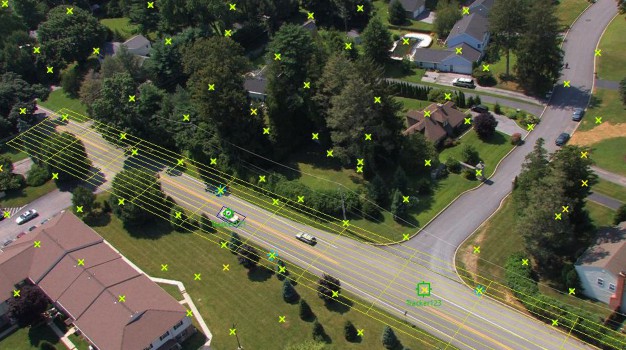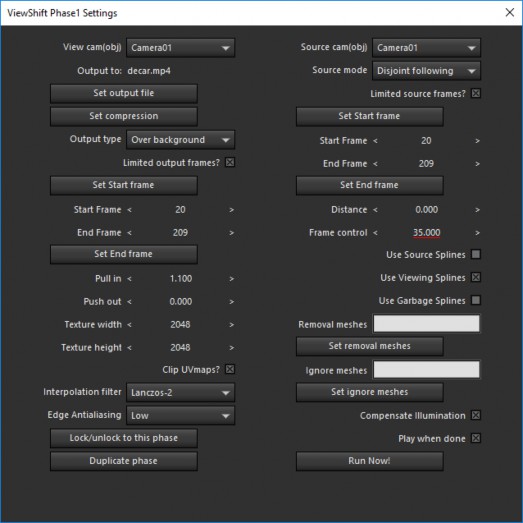< Previous | Contents | Manuals Home | Boris FX | Next >
ViewShift Fundamentals
The basic idea of ViewShift is that you've done a 3D track, have some 3D meshes in a scene (call them 'reflectors'), and project the (source) shot's imagery onto them; you can then "re-shoot" the reflector meshes from a second (viewing) camera from a different vantage point. That viewing camera might be in a different shot altogether, or might be the same source camera on a different frame in the same shot. It's a combination camera-mapping projection and render. The ViewShifted renders can then be composited into the viewing camera's shot.
Tip: When the source and viewing shots are different, they should share a coordinate system, either by using the same setup in each, or by using linked trackers and Indirectly solving mode.
Tip : ViewShift pays attention to the Back Faces and Invert Normals settings. Back faces are invisible unless the mesh's Back Faces checkbox (on the 3D panel) is turned on, which make both front and back faces visible.
Note: The ViewShift can only be as good as the camera track(s) and the meshes used.
Here's what a simple object removal example can look like, where we want to remove one of the cars from the shot:

There's a big plane—that's the reflector for this example. Here it's just a plane, but the reflector can any 3D mesh, for example a reconstructed terrain model.
Tip: ViewShift does not require a UV texture map for the reflector mesh(es)— because it's integrated, it's more direct than trying to patch together an equivalent in a 3D package.
In any ViewShift, there are a few big questions:
Which pixels are coming from the source shot?
Which pixels are going to in the viewing shot?
Which frame of the source shot will be used to supply pixels for any given viewing camera frame?
Then there are additional issues and questions to consider. As a result, if you open up the ViewShift control panel (ViewShift on the Shot menu), it looks like this:

Despite the number of controls, fundamentals should be pretty clear, such as the viewing camera and source camera at the top, as well as the output file and compression. You can consult the ViewShift reference section for descriptions of each of the controls. They have reasonable default values so you don't have to worry about them.
We'll work through the more complex issues and controls in following sections.
©2024 Boris FX, Inc. — UNOFFICIAL — Converted from original PDF.
